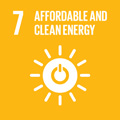- Docente: Matteo Gherardi
- Credits: 6
- SSD: ING-IND/18
- Language: English
- Moduli: Matteo Gherardi (Modulo 1) Romolo Laurita (Modulo 2)
- Teaching Mode: Traditional lectures (Modulo 1) Traditional lectures (Modulo 2)
- Campus: Bologna
- Corso: Second cycle degree programme (LM) in Energy Engineering (cod. 5978)
-
from Feb 20, 2025 to Apr 15, 2025
-
from Apr 29, 2025 to Jun 12, 2025
Learning outcomes
At the end of the course the student is able to characterize the state of the art of industrial processes assisted by thermal (hot) plasmas for the production and treatment of high added value materials, as well as to analyze the most recent technologies that make use of non-equilibrium (cold) plasmas at atmospheric pressure, for applications in various sectors related to the energy, mechanical and biomedical industries. During the course, these technologies will be discussed in terms of design, economic sustainability and experimental analysis. The student also has knowledge of the main tools adopted in the field of intellectual property protection (patents and scientific articles) and has acquired methodologies for their systematic analysis. The student is also able to synthesize patents and scientific articles and contextualize them with respect to the state of the art of their industrial sector of reference.
Course contents
Advanced industrial applications are characterized by the common need for innovative treatments that modify the properties of different materials. Innovation in the industrial field is strictly related to the capability of exploiting research and transferring it to society using intellectual property protection systems (e.g. papers and patents). The course aims to understand the process of advancing in the industrial and technological fields using plasma applications as the primary domain. Plasma, an ionized gas capable of conducting heat and electricity and consisting of electrons, ions, neutrals, and radical species, has an extraordinary potential linked to its numerous active agents that give the technology the versatility required to adapt even to the most innovative and complex applications. Controlling plasma characteristics and optimizing them for specific applications requires physical and engineering skills and a strongly interdisciplinary problem-solving approach.
The course first module will provide students with the fundamentals of i) plasma physics and chemistry and ii) intellectual property protection. The second module of the course will consist of an in-depth examination of the entire redaction process of a scientific paper, on the model of a real-world research scenario. This includes bibliographic analysis to evaluate the state of the art, conducting experiments (with hands-on laboratory experience), data collection, data analysis, discussion, and conclusion.
Readings/Bibliography
- Lieberman, Lichtenberg, Principles of Plasma Discharges and Materials Processing, John Wiley & Sons, Inc. (2005)
- Fridman, Plasma Chemistry, Cambridge University Press, Cambridge UK (2008)
Teaching methods
Lectures with overhead projector and slides
Problem based exercises
Flipped class exercises
Laboratory experiences
Group works
Assessment methods
- Module 1 - Homework (30%)
- Module 2 - Discussion of the project (70%)
Teaching tools
Supporting documents made available on Virtuale
Office hours
See the website of Matteo Gherardi
See the website of Romolo Laurita
SDGs




This teaching activity contributes to the achievement of the Sustainable Development Goals of the UN 2030 Agenda.
